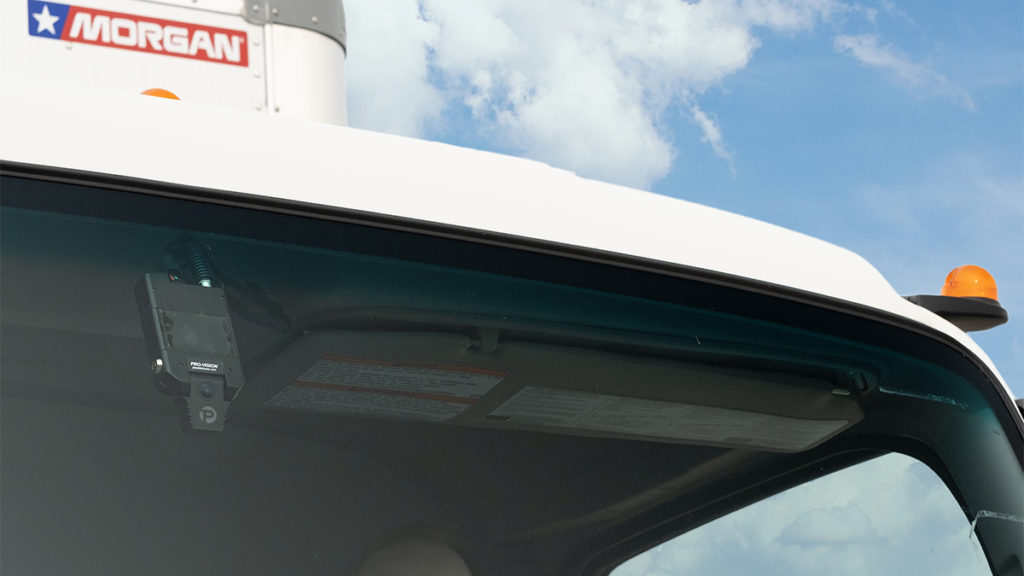
Four Ways to Improve Driver Buy-In on Dash Cameras
Dash cameras have become a popular safety tool for fleet managers. In a recent market analysis, it was reported that an estimated 36.1 million dash cameras were sold in 2019. And those numbers figure to continue on an upward trend as fleet managers continue to adopt such technology.
But for many fleet managers, they can run into some pushback from drivers who might not be keen on having a dash camera watching their moves.
For those looking at implementing dash cameras while overcoming driver objections, here are some tips for getting your drivers to buy into the technology and show how they can benefit from it.
Educate & Communicate
For any new initiative, having clear and open communication with employees is crucial to success – especially when it comes to installing dash cameras.
Before purchasing any equipment, be completely transparent with your drivers and tell them why you want to use dash cameras and the goals you have for increasing safety across the fleet. Take the time to hold open Q&A sessions with drivers on how the technology will be used and give them a chance to give input. They are on the road daily and will offer real-world insight based on their experience. Incorporating their input not only improves your dash camera program, it also gives drivers ownership of the program.
Part of the open communication involves educating drivers on how dash cameras will be used for driver protection and safety. Being open and taking the time to educate your drivers can go a long way in showing them that you’re not using this technology just to monitor them.
Even after you’ve implemented dash cameras, be sure to continually communicate with your drivers so you can get the most out of the technology as you learn things along the way.
Develop Clear Policies
As part of the focus on clear communication and education, you also need to be very clear on how the dash cameras will be used and the policies that will be implemented.
Some of the things you need to consider include:
- What will constitute safety events and how will that footage be used?
- Who will have access to that footage?
- How will safety events be reported and what will the review process be?
- What safety events will result in disciplinary action and how will that process play out?
- When will you require the dash camera to record and when can you not use it?
Those are just a few things to think about as you craft your policies. But as mentioned above, make sure you clearly discuss these policies with your drivers, give them the ability to provide feedback and be transparent. This way, there are no grey areas or issues that arise as you get your dash camera program going since you’ve set your drivers up for success.
Show Proof
Seeing proof of something working can go a long way to getting buy-in on any initiative – but especially when it comes to adding dash cameras to your fleet vehicles.
The most important thing is to show drivers that these cameras are designed to protect them and keep them safe. One of the best ways to do that is if you have video footage – either from your fleet or another one – that shows an example of footage that exonerated a driver from a false claim.
For example, let’s say you just started a pilot dash camera program and installed them on a few utility trucks. And this week, someone called you to say that Driver 1 from your company sideswiped their car and they want you to cover their repairs or they’ll sue. But when you review the video from when the alleged incident occurred, you see no evidence that your driver collided with them at all. In fact, you actually see that the complaining driver cut off your driver, and your driver used great defensive driving tactics to avoid a collision.
Bet you that false claim will go away pretty quick once they find out you have video evidence.
If your drivers can see how dash cameras can protect them, it’s much easier for them to buy into the program and see the benefits they might not have thought of.
Reward Your Drivers
As we’ve touched on throughout this post, part of getting your drivers to buy into a dash camera program is to show them it’s a tool that can provide plenty of benefits. That includes rewarding your drivers when those dash cameras capture them driving safely.
Part of implementing dash camera technology across your fleet should include developing a rewards program to incentive your drivers and highlight when they do something right.
For example, maybe it’s something as simple as giving gift cards to your top three drivers who had the fewest driving events triggered (Ex: speeding or hard braking) during the month. Or maybe it’s sharing the video company-wide of a driver who practiced defensive driving to avoid a collision when they were cut off to recognize them for their efforts.
There are multiple ways to get creative with things, but if you can show your drivers that they will be recognized for good things they do and not just the negative things, your job of getting driver buy-in should be much easier.
Protect Your Fleet with Pro-Vision
If you’re looking for fleet dash cameras that can protect your drivers and your organization, see how a Pro-Vision Dash Camera can help you increase safety across your fleet.